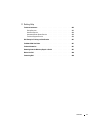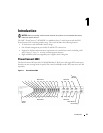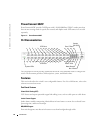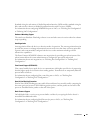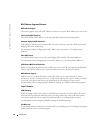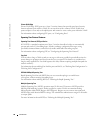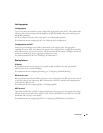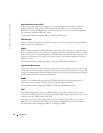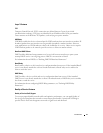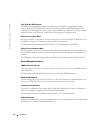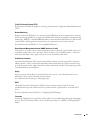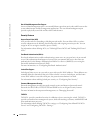
Introduction 29
Link Aggregation
Link Aggregation
Up to seven ports can combine to form a single Link Aggregated Group (LAG). This enables fault
tolerance protection from physical link disruption, higher bandwidth connections and improved
bandwidth granularity.
A LAG is composed of ports of the same speed, set to full-duplex operation.
For information about configuring LAGs, see "Defining LAG Configuration."
Link Aggregation and LACP
LACP uses peer exchanges across links to determine, on an ongoing basis, the aggregation
capability of various links, and continuously provides the maximum level of aggregation capability
achievable between a given pair of systems. LACP automatically determines, configures, binds, and
monitors the binding of ports to aggregators within the system.
For information about LACP, see "Defining LACP Parameters."
Routing Features
IP Routing
IP routing forwards to a next-hop device any packets that are addressed to the system MAC
addresses but not to a system IP address.
For information about configuring IP routing, see "Configuring Global IP Routing."
RIP Versions 1 and 2
Routing Information Protocol (RIP) is a distance-vector routing protocol. RIP selects routes based
on the hop count to the destination. RIP 2 enhances the efficiency, usability, and authentication
methods of the RIP protocol.
For information about configuring RIP, see "Configuring RIP."
OSPF Version 2
Open Shortest Path First (OSPF) is an internal gateway routing protocol. In networks with a large
number of inter-connected routers, OSPF is more efficient than RIP because OSPF uses less link
bandwidth and converges more quickly.
For information about configuring OSPF, see "Configuring OSPF Parameters and Filters."



